MARIANI’S
Virtual
Gourmet
January
17, 2021
NEWSLETTER
ARCHIVE
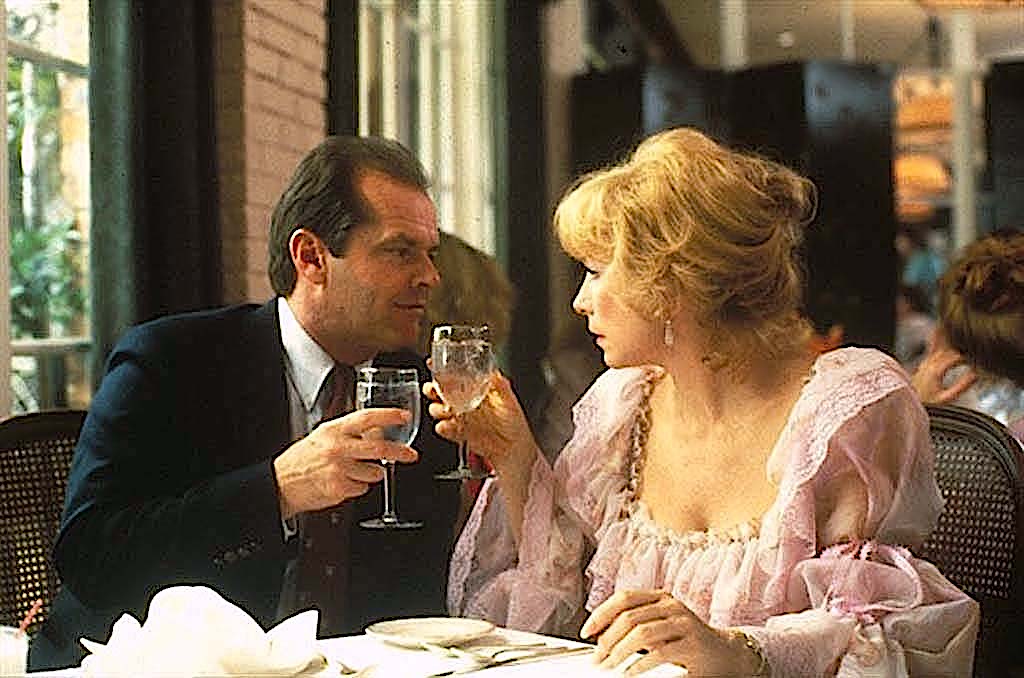
By
John Mariani
HOW THE FOOD MEDIA DEMONIZING FOOD
WITH ILL-ADVISED POLITICAL CORRECTNESS
By John Mariani
NEW YORK CORNER
LOVE AND PIZZA
CHAPTER FORTY-THREE
By John Mariani
NOTES FROM THE WINE CELLAR
THE BEST WINE IN THE WORLD
BY
JOHN A. CURTAS
❖❖❖
WITH ILL-ADVISED POLITICAL CORRECTNESS
By John Mariani
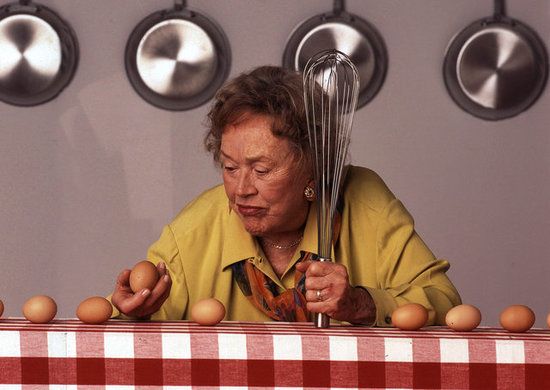
Like much else in contemporary
society, the food media are trying to right
wrongs in the way they are staffed and what
their focus will be in the future. The result
has been an admirable
number of new appointments with an eye towards
diversity. Last June the staffs of Bon Appetit
and Epicurious
(whose parent company is Condé Nast)
co-published “A Long Overdue Apology, and
Where Do We Go From Here?” after the
resignation of Bon
Appetit editor-in-chief Adam Rappaport
(below, 2nd from right, with staff) when a
“deeply offensive” photo of him “mocking
Puerto Ricans” in costume appeared in the
news.
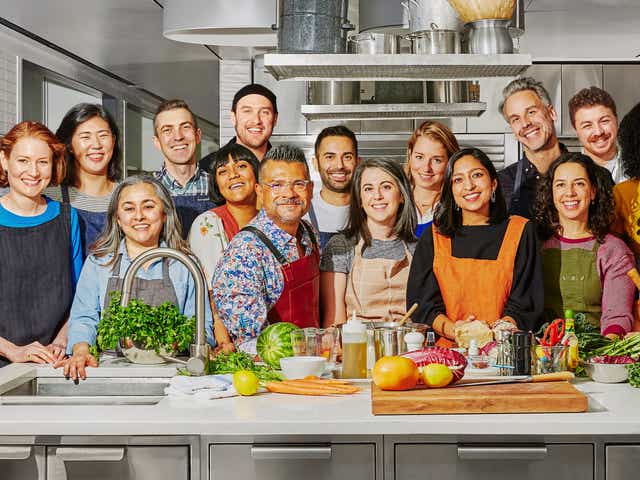 “We have been
complicit with a culture we don’t agree with and
are committed to change,” said the apology. “Our
mastheads have been far too white for far too
long. As a result, the recipes, stories, and
people we’ve highlighted have too often come
from a white-centric viewpoint. At times we have
treated non-white stories as ‘not newsworthy’ or
‘trendy.’... Black staffers have been saddled
with contributing racial education to our staffs
and appearing in editorial and promotional photo
shoots to make our brands seem more diverse. We
haven’t properly learned from or taken ownership
of our mistakes. But things are going to
change.”
“We have been
complicit with a culture we don’t agree with and
are committed to change,” said the apology. “Our
mastheads have been far too white for far too
long. As a result, the recipes, stories, and
people we’ve highlighted have too often come
from a white-centric viewpoint. At times we have
treated non-white stories as ‘not newsworthy’ or
‘trendy.’... Black staffers have been saddled
with contributing racial education to our staffs
and appearing in editorial and promotional photo
shoots to make our brands seem more diverse. We
haven’t properly learned from or taken ownership
of our mistakes. But things are going to
change.”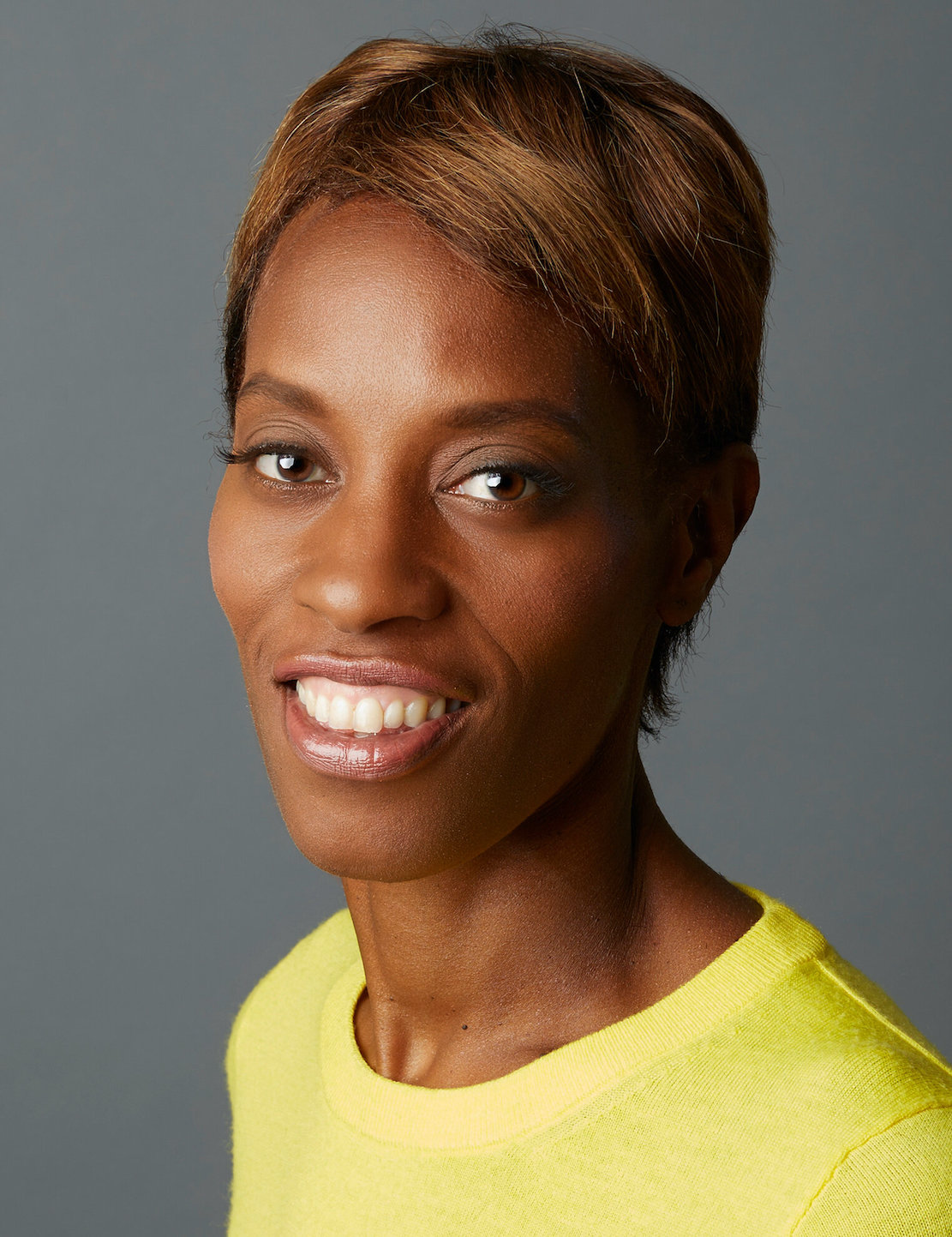
Indeed, within two months, Bon Appetit
appointed a black woman, Dawn Davis (right),
as the food publication’s new editor-in-chief.
Davis, when a vice president at Simon &
Schuster, founded Inkwell Book Club online,
celebrating Black authors. Before that, she had
been the publisher of HarperCollins
imprint Amistad Press, “devoted to
multicultural voices.”
Many other media, including The New York
Times, have scrambled to recruit female,
Black and Asian editors and writers in an
applaudable attempt to diversify their food
staffs, which will increase attention on
international foods that might once have been
written about by white  authors with
no connection to the traditions of a country’s
food culture. But in their urgency to distance
themselves from past errors, some media are
adopting highly questionable, politically
correct assertions that contend there is only
one way to make a particular dish and the only
person to write such an article must be
verifiably from a particular region where
everyone makes that dish a specific way.
authors with
no connection to the traditions of a country’s
food culture. But in their urgency to distance
themselves from past errors, some media are
adopting highly questionable, politically
correct assertions that contend there is only
one way to make a particular dish and the only
person to write such an article must be
verifiably from a particular region where
everyone makes that dish a specific way.
David
Tamarkin (left), the white digital editor
of Epicurious,
made his own mea culpas
recently “after a lot of consciousness-raising
among the editors and staff” by admitting that
in the past, "We have purported to make a recipe
‘better’ by making it faster, or
swapping in ingredients that were assumed to be
more familiar to American palates, or easier to
find . We have inferred [sic]
(and in some cases outright labeled) ingredients
and techniques to be ‘surprising’ or ‘weird.’
And we have published terminology that was
widely accepted in food writing at the time, and
that we now recognize has always been racist.”
As a result the staff went through a
trove of 35,000 recipes from Bon
Appetit, Gourmet, House & Garden and Epicurious
for offensive words that included “authentic”
and “exotic.” Ironically, the highly respected
black chef Marcus Samuelsson (below), who
was born in Ethiopia but raised in Sweden,  was
roundly criticized and forced to apologize for
publishing a recipe in Bon Appetit
for a soup named joumou,
adapted from his cookbook The Rise:
Black Cooks and the Soul of American Food,
because the magazine referred to it as a Haitian
staple that symbolizes the country’s violent
liberation from its French colonizers.
Samuelsson’s only crime was that he is not
Haitian.
was
roundly criticized and forced to apologize for
publishing a recipe in Bon Appetit
for a soup named joumou,
adapted from his cookbook The Rise:
Black Cooks and the Soul of American Food,
because the magazine referred to it as a Haitian
staple that symbolizes the country’s violent
liberation from its French colonizers.
Samuelsson’s only crime was that he is not
Haitian.
The problem with such re-casting or
deletions is that the editors seem completely to
misunderstand how food cultures form and evolve
and why certain dishes are made certain ways
only because of a lack of availability of
ingredients or
kitchen tools. After all, ingredients
like tomatoes, potatoes, corn, chile peppers,
cocoa, pineapple, squash, vanilla and wild rice
were native to America and only gradually
entered into the food cultures of Europe, Africa
and Asia, which then adapted them in their own
ways.
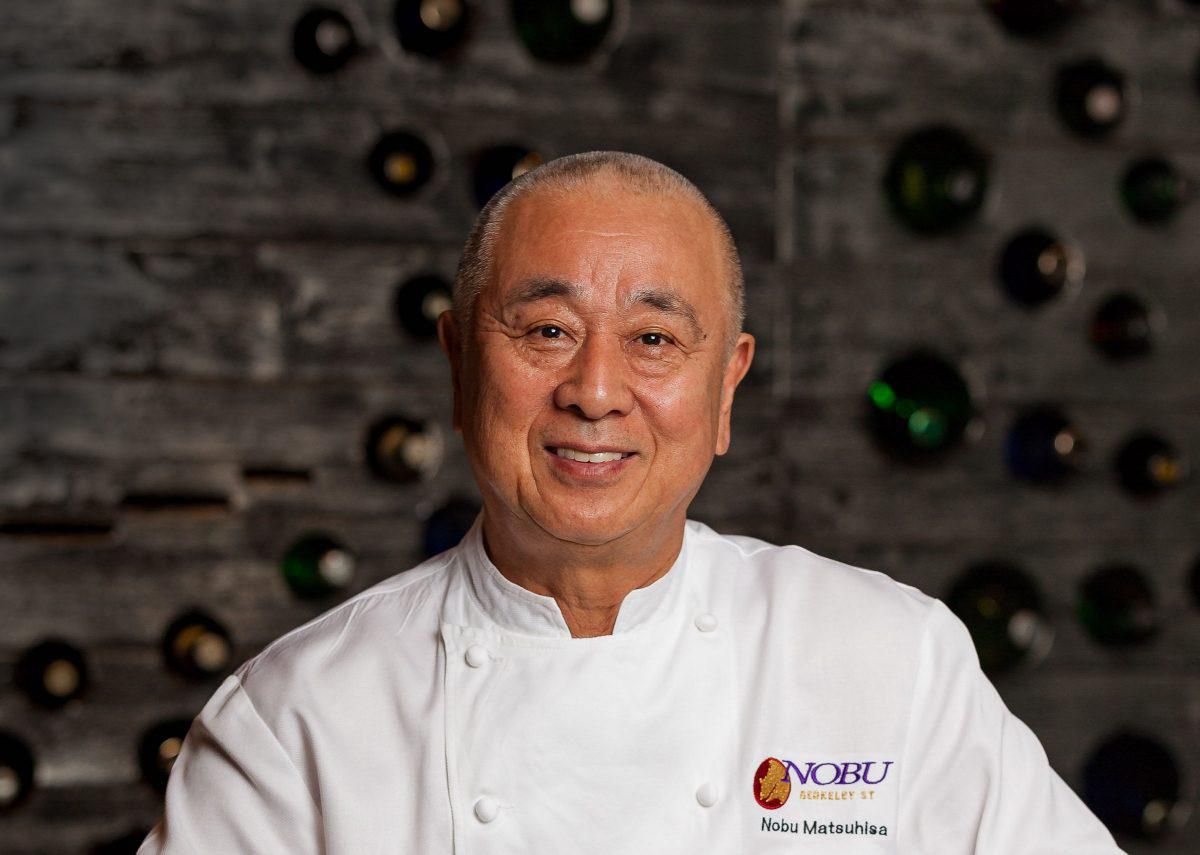 Portuguese
traders brought the idea of tempura to
Japan, while Japanese chef Nobu Matsuhisa (left)
created a new form of sushi in Peru. A Hong Kong
chef created “Singapore noodles” in the 1950s.
Benihana of Tokyo originated in New York.
Vietnamese banh mi
sandwiches are “correctly” made with French
baguettes, brought to what was then Indo-China
in the 1860s. Hawaiians, introduced to SPAM
during World War II, now claim it as their state
food, and Austrians and Italians still argue
about which came first, Wienerschnitzel
or vitello
alla Milanese.
Portuguese
traders brought the idea of tempura to
Japan, while Japanese chef Nobu Matsuhisa (left)
created a new form of sushi in Peru. A Hong Kong
chef created “Singapore noodles” in the 1950s.
Benihana of Tokyo originated in New York.
Vietnamese banh mi
sandwiches are “correctly” made with French
baguettes, brought to what was then Indo-China
in the 1860s. Hawaiians, introduced to SPAM
during World War II, now claim it as their state
food, and Austrians and Italians still argue
about which came first, Wienerschnitzel
or vitello
alla Milanese.
Is the bagel an Eastern European food
item or a Jewish-American one? And, further, are
the quickly disappearing, firmer, denser bagels
of a century ago in New York—once called “belly
bombs”— the only ones
Epicurious
would consider giving a recipe for, despite
bagels evolving into a lighter, moister variety
that most people enjoy everywhere? And what of
the variants made 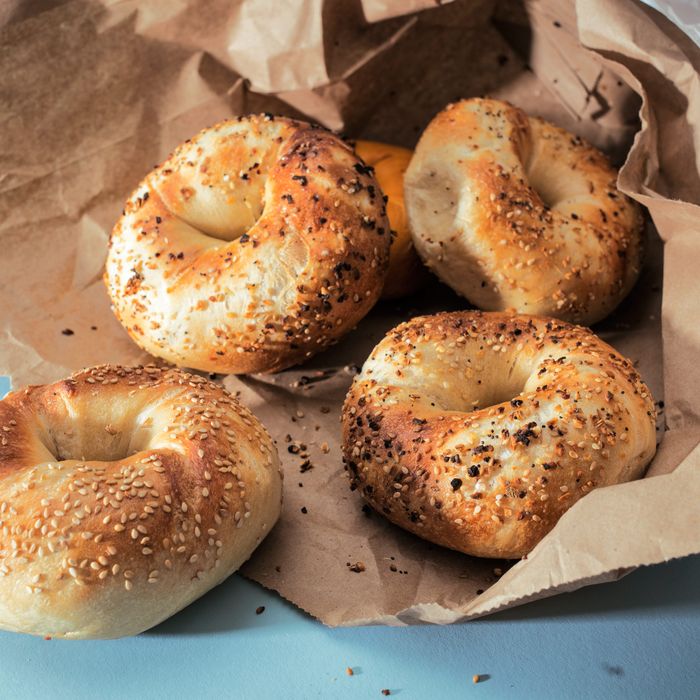 by
traditional Jewish bakers in Montreal that are
quite different from New York bagels? (So, too,
Jewish-American smoked salmon is unknown to Jews
in Europe.)
by
traditional Jewish bakers in Montreal that are
quite different from New York bagels? (So, too,
Jewish-American smoked salmon is unknown to Jews
in Europe.)
The Neapolitan pizza alla
Margherita, created by Raphael Esposito
for Queen Margherita in 1864, became the
template for pizzas there and in the U.S.
(although most Italians north of Naples had
never heard of pizza until after World War II).
And the official Neapolitan tradition is to make
it by certain strict rules—as sanctioned by the
Associazione
Pizzaioli Europei e Sostenitori—as to the
ingredients in the dough (no fats allowed),
which must be kneaded by hand, the  diameter,
the kind of oven, the temperature and so on.
Yet, the Neapolitan pie has a soft center that
bears little resemblance to the crispy,
thin-crusted pizzas now ubiquitous in the world,
or the square Sicilian style. Would Epicurious
refuse to print a recipe for the latter and
insist on only hand kneading the former?
diameter,
the kind of oven, the temperature and so on.
Yet, the Neapolitan pie has a soft center that
bears little resemblance to the crispy,
thin-crusted pizzas now ubiquitous in the world,
or the square Sicilian style. Would Epicurious
refuse to print a recipe for the latter and
insist on only hand kneading the former?
Tamarkin’s
suggestion that making a recipe “faster” somehow
compromises the integrity of a prepared food
completely ignores how every food culture in the
world now uses food processors and electric
mixers. Coal-fired stoves were abandoned decades
ago in Europe, and not all French or German or
English bakers cook with wood-fired ovens any
more.
May Chinese vegetables only be chopped
with a cleaver, not a knife? I recall when the
late Julia Child on her PBS TV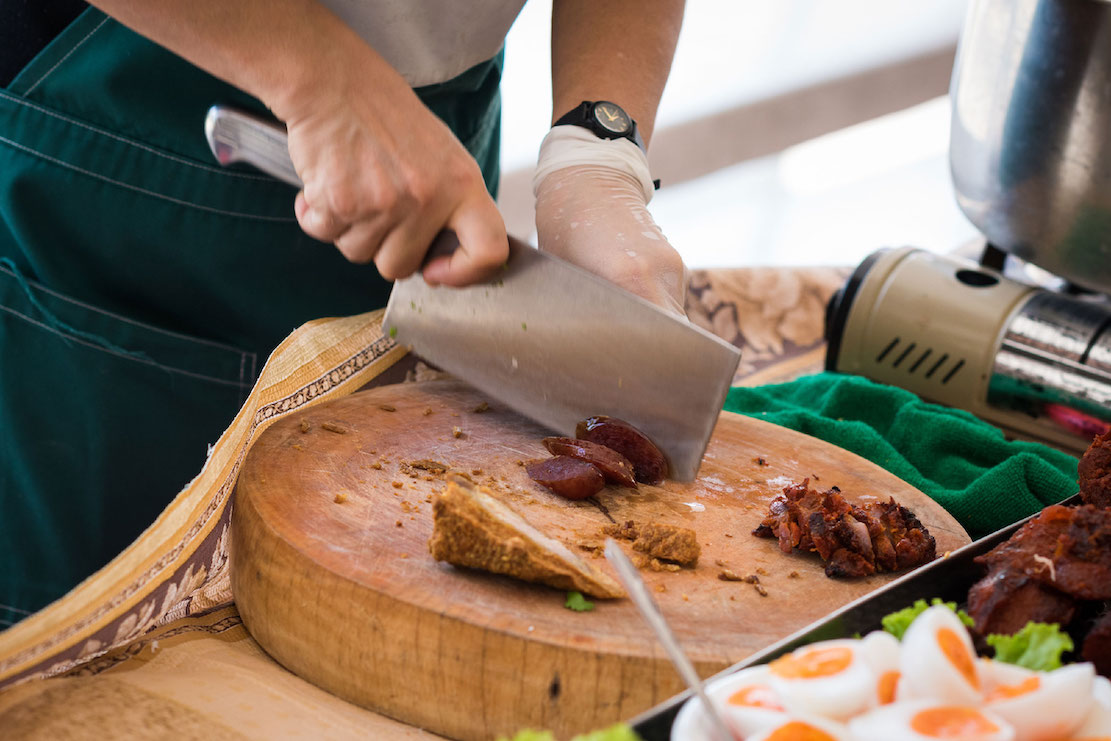 shows in the 1960s insisted the only correct way
to whip egg whites was with a big wire whisk—an
outmoded French cook’s idea that Child herself
ultimately abandoned. I also recall the late
North Carolina food writer James Villas taking
me to his favorite barbecue place in Charlotte,
where he swore they still “properly” chopped the
‘cue by hand with a hatchet, but there wasn’t a
hatchet to be found anywhere near the chopping
block.
shows in the 1960s insisted the only correct way
to whip egg whites was with a big wire whisk—an
outmoded French cook’s idea that Child herself
ultimately abandoned. I also recall the late
North Carolina food writer James Villas taking
me to his favorite barbecue place in Charlotte,
where he swore they still “properly” chopped the
‘cue by hand with a hatchet, but there wasn’t a
hatchet to be found anywhere near the chopping
block.
Tamarkin’s disdain for recipes using
“ingredients that were assumed to be more
familiar to American palates, or easier to find”
is an absurd example of p.c. overreaction. It
would be exceptionally rare these days to find
squirrel in Brunswick stew, game birds hung in
barns until they turn green with rot, or
Sardinian cheeses  containing
worms (now forbidden by law). Since Bon Appetit
(despite its own Euro-centric title touting a
French connection) is, in fact, an
American-based magazine published for an
American readership, will all future recipes
really insist its readers try to ferret out the
potentially poisonous Japanese blowfish called fugu, which
Japanese
cooks train years to master? Or order what the
Chinese themselves call “stinky tofu” (left)
from a Taipei market? And, if you can’t obtain
the revered (and very expensive) poulet de
Bresse, can one ever hope to make a decent
roast chicken? Not too long ago, an American
couldn’t even buy true prosciutto
di Parma, balsamic vinegar from Modena or
buffalo milk mozzarella in this country.
containing
worms (now forbidden by law). Since Bon Appetit
(despite its own Euro-centric title touting a
French connection) is, in fact, an
American-based magazine published for an
American readership, will all future recipes
really insist its readers try to ferret out the
potentially poisonous Japanese blowfish called fugu, which
Japanese
cooks train years to master? Or order what the
Chinese themselves call “stinky tofu” (left)
from a Taipei market? And, if you can’t obtain
the revered (and very expensive) poulet de
Bresse, can one ever hope to make a decent
roast chicken? Not too long ago, an American
couldn’t even buy true prosciutto
di Parma, balsamic vinegar from Modena or
buffalo milk mozzarella in this country.
Of
course, the idea that only a Sichuan chef should
be allowed to write about a Sichuan dish with
Sichuan ingredients or a Languédoc chef should
be the only one to write about what goes into a
cassoulet (below), when even in
Languédoc, there are three types, is senseless.
Should one forget about trying to make a
Daiquiri without being shown how by a Havana
bartender using only Cuban rum, long banned in
the U.S.? Doesn’t that fly in the face of
Tamarkin’s distaste for the word “authentic,”
when that’s exactly what these editors are
aiming for?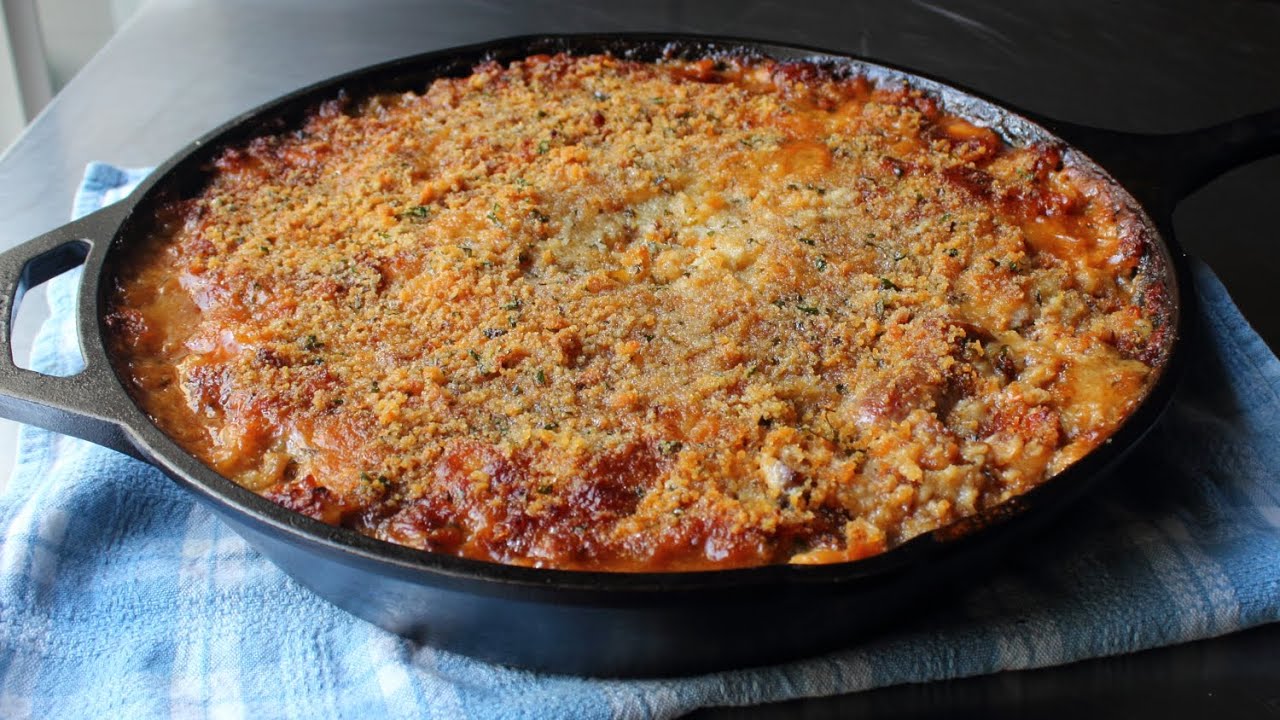
He and others in the food media have also
tried to delete the words “ethnic” and “exotic,”
whose dictionary definitions they obviously have
not consulted. If you are an American, it is no
stretch or slur to think of monkey brains or
cobra hearts (which Anthony Bourdain once wolfed
down on TV) as “exotic” within the definition of
being “of foreign origin” or “of a uniquely new
or experimental nature,” as per The Random
House Dictionary of the English Language.
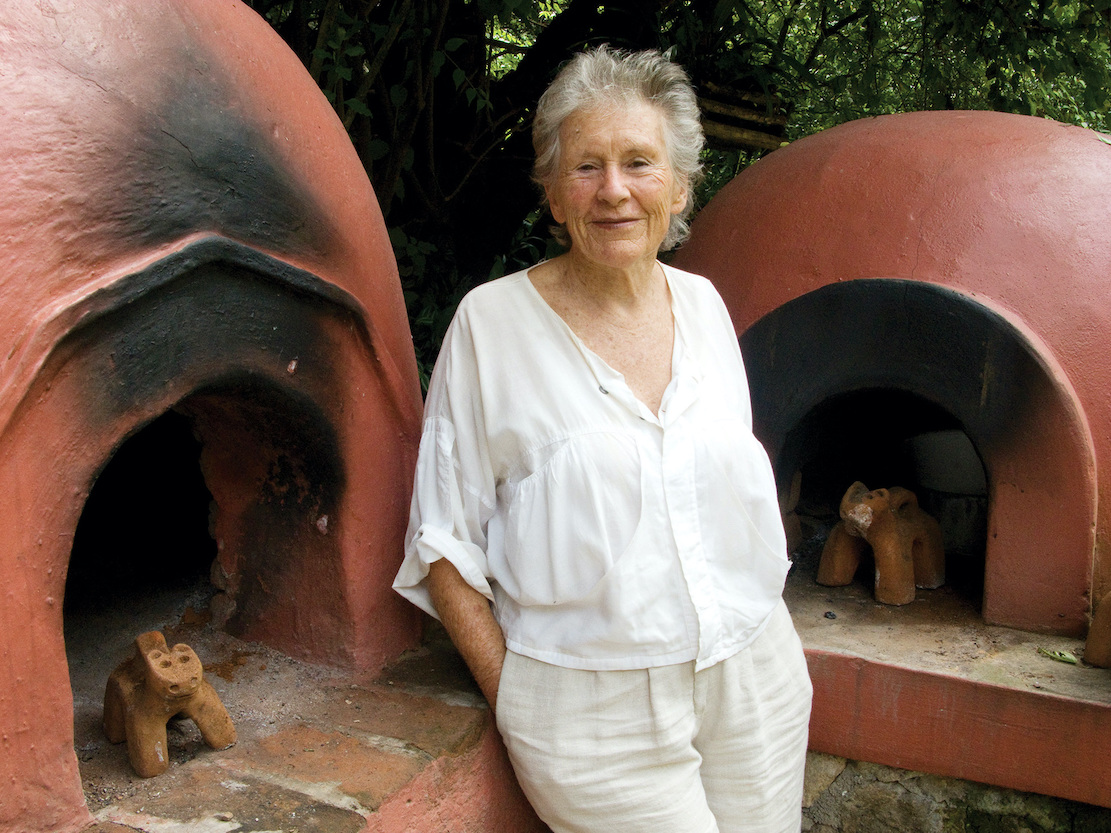 The
fact is, many of the best, most knowledgeable
food writers who have had the most influence in
encouraging Americans to eat food from all over
the world do not have the blood of those
countries in their veins, beginning with Julia
Child, who was not French; Paula Wolfert, who is
not Moroccan; Elizabeth David, who was not
Italian, and Diana Kennedy (left) who is
not Mexican. Apparently Bon Appetit
and Epicurious
would ban such authorities from their pages
because they are all white people, albeit women,
who could not possibly show the same intimate
knowledge or soul for a cuisine as would a cook
born in those countries.
The
fact is, many of the best, most knowledgeable
food writers who have had the most influence in
encouraging Americans to eat food from all over
the world do not have the blood of those
countries in their veins, beginning with Julia
Child, who was not French; Paula Wolfert, who is
not Moroccan; Elizabeth David, who was not
Italian, and Diana Kennedy (left) who is
not Mexican. Apparently Bon Appetit
and Epicurious
would ban such authorities from their pages
because they are all white people, albeit women,
who could not possibly show the same intimate
knowledge or soul for a cuisine as would a cook
born in those countries.
Which
is, of course, a troubling form of reverse
racism and implies that anyone eating a modified
form of any culture’s food makes one a racist as
well, as if Tex-Mex or Chino-Latino are slurs
against the food of the Yucatan or Canton. And,
if there are two chefs in Bologna who would
agree on how to make lasagne
alla bolognese, it would be a miracle.
❖❖❖
SAVVY, FUNNY AND DEEPLY
DEDICATED
AMERICAN FOOD WRITER ELLEN BROWN DIES
By John Mariani
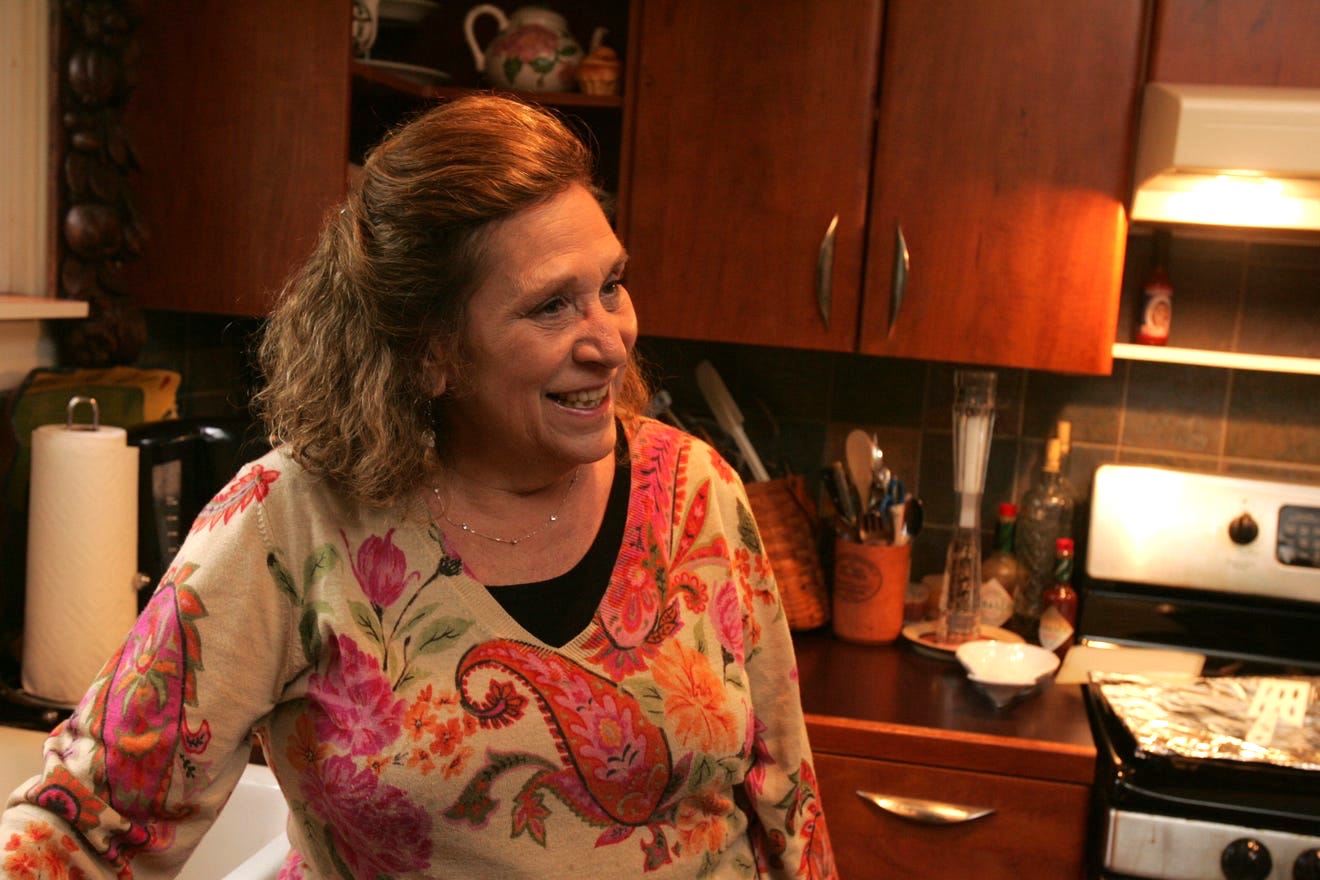 I was very
saddened to hear that one of my dearest and
oldest friends, Ellen Brown, died at her
Providence, Rhode Island, home last week
at the age 0f 72. I knew her for most of her
forty-year career as one of the seminal food
writers of the 20th century, whose mission to
cover the entire United States culinary scene,
lavishly funded by her employer, USA Today,
was unique at a time when food writers were
almost entirely parochial.
I was very
saddened to hear that one of my dearest and
oldest friends, Ellen Brown, died at her
Providence, Rhode Island, home last week
at the age 0f 72. I knew her for most of her
forty-year career as one of the seminal food
writers of the 20th century, whose mission to
cover the entire United States culinary scene,
lavishly funded by her employer, USA Today,
was unique at a time when food writers were
almost entirely parochial.
As author of 43 books, which included
primers on everything from sausage and cast-iron
cookery to vegan and gluten-free diets, no one
showed a greater range and grasp of her
subjects, which she rigorously researched and
repeatedly tested. Her Cooking
with the New American Chefs (1985) was the
first to showcase what was going on during the
most fertile period of American gastronomy,
championing the diverse contributions of young
chefs like Lawrence Forgione, Lydia Shire, Paul
Prudhomme, Anne Greer, Wolfgang Puck, Barbara
Tropp and many others whom she had gotten to
know and work with while traveling the country.
And, as a woman of
broad interests, she could tie in what chefs
were innovating with the work of Abstract
Expressionism and Pop Art. In her book she
wrote, “The new American chefs have no sense of
inferiority. When they draw from the American
cookery of the past, it is because it is a
component of their philosophies. ... While it
may be impossible to define America’s cuisine,
it is quite easy to describe new American chefs.
They are cooking creatively with a personal
style. They are concocting dishes nightly
bearing personal signatures as large as John
Hancock’s on the Declaration 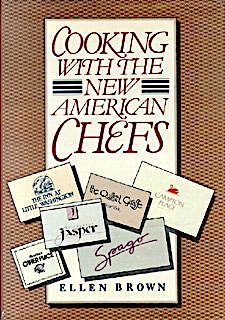 of Independence.”
of Independence.”
She was the artistic director for the
Great Chefs TV series long before the appearance
of the Food Network, and was one of the first
honorees to receive the “Who’s Who of Cooking in
America” award. After residence in Washington DC
and Nantucket, she moved to Providence and wrote
the Providence
Journal’s “Cost-Buster Cooking” column for
seven years.
Having been the food writer
for the Cincinnati
Enquirer, owned by the Gannett Company,
she and several others at the paper were
hand-picked by chairman Al Neuharth, who simply
pointed to people in the newsroom and said, “You, you, you and
you. Pack up, you’re moving to Washington,”
where Ellen became the groundbreaking food
editor at USA Today.
Ellen had battled many medical problems
over the years, and her death followed
cardiovascular surgery this month—an operation
she shrugged off as “another of those pesky
procedures” when I spoke with her a couple of
weeks ago. Ellen was a battler throughout her
life, feisty but always fair, ever self-effacing
and a damn good gossip. She was easily the
funniest woman I’ve ever met and the one who
coined the phrase “the Department of Sales
Prevention” to describe the anemic efforts
publishers’ marketing departments made on behalf
of their authors.
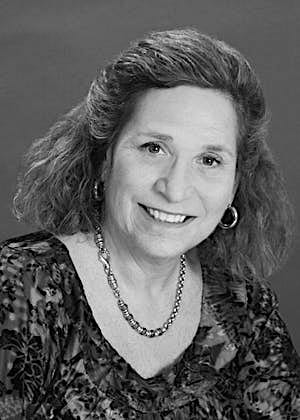 Known as a
hostess extraordinaire and staunch member of the
Commanderie de Bordeaux, she used her guests as
guinea pigs for her latest projects, and her
guest lists were always chosen to be people of
achievement and true personality. And, although
she never had children, her amiable interest in
others’ kids was always warmly sincere. On the
phone with me her first questions was always,
“So, how are the babies?”
Known as a
hostess extraordinaire and staunch member of the
Commanderie de Bordeaux, she used her guests as
guinea pigs for her latest projects, and her
guest lists were always chosen to be people of
achievement and true personality. And, although
she never had children, her amiable interest in
others’ kids was always warmly sincere. On the
phone with me her first questions was always,
“So, how are the babies?”
Those who knew her well or even slightly
marveled at her knowledge, her expertise, her
wit and her willingness to help her colleagues
in any way she could. She was one of the few in
a back-biting industry I never heard a shallow
word about.
At a time when
the current food media are directed to report
trends and avoid historical context and to do so
on minuscule budgets, it is unlikely we shall
ever see the likes of Ellen Brown again. The
woman knew her stuff and wanted everyone who
read her to trust her as someone who would never
let them down, whether it was baking Christmas
cookies or making a grilled cheese sandwich.
❖❖❖
LOVE AND PIZZA
Since, for the time being, I am unable to write about or review New York City restaurants, I have decided instead to print a serialized version of my (unpublished) novel Love and Pizza, which takes place in New York and Italy and involves a young, beautiful Bronx woman named Nicola Santini from an Italian family impassioned about food. As the story goes on, Nicola, who is a student at Columbia University, struggles to maintain her roots while seeing a future that could lead her far from them—a future that involves a career and a love affair that would change her life forever. So, while New York’s restaurants remain closed, I will run a chapter of the Love and Pizza each week until the crisis is over. Afterwards I shall be offering the entire book digitally. I hope you like the idea and even more that you will love Nicola, her family and her friends. I’d love to know what you think. Contact me at loveandpizza123@gmail.com
—John Mariani
To read previous chapters go to archive (beginning with March 29, 2020, issue.
LOVE AND PIZZA
Cover Art By Galina Dargery

CHAPTER FORTY-THREE

It was
a week after New Year’s when Nicola picked up
the phone to find Marco di Noè on the other
end of the line.
“Nicola,
song je! Nicola, it’s me!” he said in
Neapolitan dialect.
Nicola had not put Marco out of her mind
in the previous three months but for some reason
she was surprised that he’d actually followed
through on his intention to come to New York to
work as a private chef.
“Marco,” she said, “It’s great to hear
from you. Where
are you?”
“I am staying with the family I’m cooking
for. They’ve
given me my own studio apartment below their
apartment.
They have a duplex, and my room is not
big but has a kitchen and a little place to put
my easel and paints. And,
Nicola, you know where it is?”
“Where?”
“Right across the street from the
Metropolitan Museum of Art!”
“Oh, Marco, that is fantastic! You
are so lucky.”
“So, now that I’ve shown you the Museo in
Napoli, perhaps you can show me the
Metropolitan.”
Nicola was ecstatic. “There’s
nothing more I’d rather do. What’s
your schedule like?”
 “Well,
I
always have at least two days off, though they
vary depending on when the family is here. There’s
really only one daughter—I think she’s about
ten—and they have a son at boarding school. Mr.
Harrison—that’s my boss—usually comes home late
and his wife has many parties and dinners to go
to, so things are flexible, especially during
the day. Since
I arrived, I’ve made lunch twice, for the
daughter. I made—what do you call them?—chicken
fingers, twice.”
“Well,
I
always have at least two days off, though they
vary depending on when the family is here. There’s
really only one daughter—I think she’s about
ten—and they have a son at boarding school. Mr.
Harrison—that’s my boss—usually comes home late
and his wife has many parties and dinners to go
to, so things are flexible, especially during
the day. Since
I arrived, I’ve made lunch twice, for the
daughter. I made—what do you call them?—chicken
fingers, twice.”
“Then pick a day,” said Nicola. “I am
pretty free right now.”
The
two
of them decided on the following Thursday and
Nicola said she’d meet Marco on the steps of the
museum.
That
day it snowed, blanketing the sidewalks and
steps, although they were well swept before the
museum opened at ten o’clock.
When Nicola arrived at the museum, Marco
was standing out front. “I had to buy a coat!”
were his first words. “This is incredible. I’ve
never seen snow like this.”
The two of them hugged and kissed each
other on the cheeks, and Marco pointed to a
window on the eleventh floor of the building
across the street. “That’s where I live,” he
said.
“Marco, you are really living very well.”
“I think so. The people—when I see
them—they are very nice. Mr. Harrison says very
little but Mrs. Harrison tells me exactly what
she wants and when she wants it, days in
advance. So, Signorina
Santini, please show me the Metropolitan Museum
of Art.”
And with that the two of them walked arm
in arm briskly up the still slippery steps and
entered the magnificent entrance hall.
“No, this was built from scratch just for the people of New York. Actually for the people of the whole world. You’ll probably hear as many other languages as you’ll hear English.”
“Ah, va bene, I will practice my languages then.”
Nicola could not have conceived of a more enjoyable task than to show Marco around the vast museum, from the Egyptian exhibits to the American wing, then up the grand staircase to the European galleries, rich in every great artist of the Renaissance.

They spent two hours in those galleries, Marco constantly shaking his head at the astonishing masterpieces, one after another, in room after room, many of which he’d only seen in books.
“And now I want to show you something very special,” said Nicola, taking Marco by the hand to the great Christmas tree and créche (right), soon to be taken down after Twelfth Night. “Guarda, Marco.”
What Marco saw was a towering fir tree adorned with lights and more than fifty cherubic angels. The créche had at least as many figures—Madonna and child, Joseph, the Magi, and the peasants of Nazareth, sheep, camels, horses, all carved by the Neapolitan artists Giuseppe Sammartino, Salvatore di Ranco, Giuseppe Gori, and Angelo Viva.
Marco could hardly believe what he beheld, almost brought to tears, both by the grandeur of the tree and the sculptures and by the graciousness of Nicola for bringing him there. Marco looked and looked and looked, then, turning to Nicola, said “Tante grazie, cara,” and kissed her passionately on her lips. Surprised but thrilled, Nicola kissed him back with just as much vivacity.
“I’ve missed you,” said Marco. “I think of this moment many, many times.”
Nicola demurred and said, “I’m very happy you’re here, Marco. We have so much to see and do.”
“Are you hungry?”
“As a matter of fact, yes I am.”
“Good. I fix you lunch. The Harrisons are not home tonight.”
Nicola loved the idea of having Marco cook for her and wanted to see his apartment right across the street.
Marco’s studio was part of the first level of the duplex. It was a little larger than many New York studios, with a decent sized kitchenette with a narrow four-burner stove. There was a sofa bed and a small bathroom. And there was a terrace, overlooking Fifth Avenue. Marco had already set up his easel and put out his painting equipment, though there were no paintings visible.
“Make yourself comfortable, Nicolina,” he said.
Well, that was the first time he’d use the diminutive for her name, she noticed. Nicola put her coat on the sofa and asked if she could help. Marco said, “Yes, you can. Would you light the oven to 180 degrees? I don’t know what that is in Fahrenheit.”
“I think it’s about 350 degrees.”
 “Okay,
that sounds good.
Now please peel six garlic cloves for
me.”
“Okay,
that sounds good.
Now please peel six garlic cloves for
me.”“Not much of a job,” said Nicola, who proceeded to smash the cloves with the blade of a knife to remove the paper-like peel. Marco took out a sauté pan, splashed it with olive oil and she began cooking the garlic very slowly. “Don’t let them burn, Nicolina,” he instructed, “just a little gold color.”
“I know, I know. Then you want me to take them out of the pan, right?”
Marco opened the refrigerator and took out two filets of sole wrapped in paper and a bottle of white wine. He then gave Nicola one chile pepper and asked her to remove the seeds, then mince the flesh. He spread out a sheet of aluminum foil, placed the fish, garlic and chile pepper on it with two basil leaves, added a few sliced cherry tomatoes, splashed the ingredients with olive oil, folded its sides up and poured in some of the wine, then sealed the foil to make a package he placed in the pre-heated oven.
“Now we have a glass of wine and wait fifteen minutes.”
He poured the wine—a Campanian Falanghina—and the two of them clinked glasses, “Salute.” Nicola almost said “Cent’anni!” but then thought that was something personal to her and her Columbia friends.
Marco took Nicola to the window, his arm around her waist. A light snow was falling and the museum’s façade was already lighted. “Look at my beautiful view,” he said, “The Metropolitan Museum, Central Park, magnifico!”
Nicola thought to herself that it certainly was and that the view from her own apartment just looked out on other old apartment buildings. Then she pointed out some other landmarks in the distance, down Fifth Avenue to the south edge of the Park, and to the north they could just see the rounded bulging shape of Frank Lloyd Wright’s Guggenheim Museum jutting out.
“That’s our next visit, Marco,” said Nicola.
“My God, there is so much to see in this city,” said Marco. “It could take a lifetime!”

“I certainly haven’t exhausted it yet. And when you finish with Manhattan, there’s Brooklyn, Queens, Staten Island and the Bronx. I would love you to see the Botanical Gardens and the Bronx Zoo.”
Marco said, “And there maybe you can cook for me.” Then, glancing at his watch, said, “Ah, the fish is cooked.” He took the foil package out of the oven, placed it on a platter and brought it to the small dining table where Nicola had set two warmed plates. Marco carefully peeled back the aluminum foil and a fragrant whoosh of steam—garlic, tomato and basil—ascended into the air.
Nicola inhaled the perfume and said, “Oh, my God, that smells so wonderful.”
“I hope you like it,” Marco said and served her a portion of fish, spooning the rest of the ingredients onto her plate, then served himself. As on Capri, Marco’s cooking was direct, simple, but intense with the flavors of each individual ingredient.
“Is this the kind of food the Harrisons eat every night?” asked Nicola.
Marco shrugged and replied, “The daughter wants to eat American—the burgers, the chicken fingers—the parents, they hired me for my cooking but they don’t want to eat Italian all the time. Mrs. Harrison, she seems to live on nothing but salads. Il Signore is not picky, but, to tell you the truth, I don't really know why they needed to hire me.”
Sounding like her friend Catherine, Nicola said, “Rich people like the Harrisons hire people like you for the prestige of being able to say to their friends, ‘Oh, we have the best chef from Capri as our personal cook.’ It’s not about what the Harrisons eat, it’s about who you are and what you serve their friends.”
“I understand that, and I’m not complaining. I have an apartment in New York, I have plenty of time to myself, and, now, I have you with me, Nicolina.”
The young couple embraced and began to kiss each other passionately. Marco alternated his advances, kissing her forcefully then tenderly, pulling her close then releasing her, just to look at her. Nicola responded to every move, as if they were dancing, then with two swift motions, Marco tossed the pillow off the sofa and yanked open the bed, easing Nicola onto it, undoing the buttons of her blouse. Nicola pressed him to her by his waist and when he knelt over her for a moment, repeating “bella, bellissima,” she slowly unclasped his belt.
Nicola had little to compare Marco’s lovemaking to, but if Giancarlo’s movements had had the rhythm of waves, Marco’s were like those of surging surf. He was not rough but his movements were charged as much with pure lust as with emotion, and Nicola was deliriously happy to respond to both.
Afterwards, Marco sat up and smiled like a little boy who had just won a prize, which Nicola was very pleased to have given him. Then Marco said, “Ah, cara, I have thought about us in bed for many weeks. Ever since your visit to Napoli. And now we have all the time in the world.”
Nicola would wait to see how that played out, so for the time being, she thought she’d lighten the electricity in the air and asked, “Marco, are you the only Italian guy who doesn’t smoke a cigarette after making love?”
Marco was surprised by the question, laughed and replied, “Maybe so.”
“One more thing I like about this man,” Nicola said to herself.
© John Mariani, 2020
BY
JOHN A. CURTAS
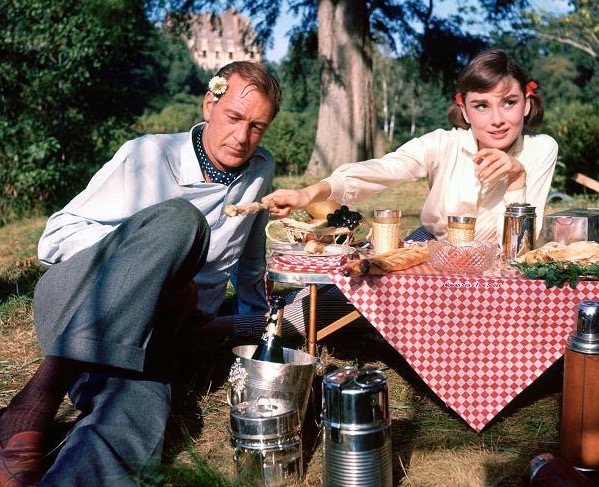
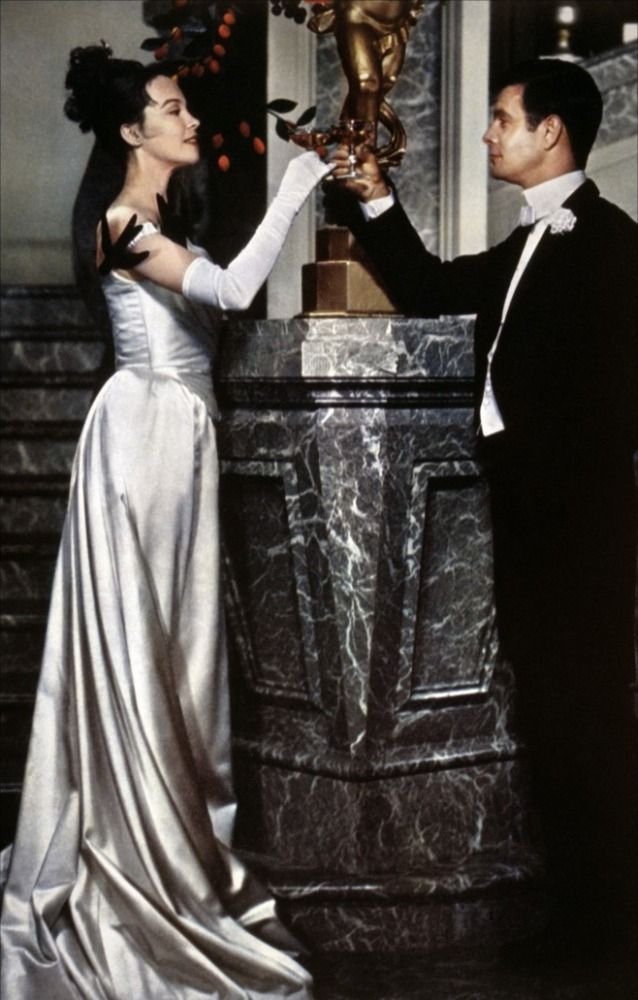 a
muscular Cali cab that washes down a
Flintstonean rib eye in a clubby American
steakhouse.
a
muscular Cali cab that washes down a
Flintstonean rib eye in a clubby American
steakhouse.
The best wine is the one that captures the mood of the moment, and the essence of itself, along with the place where it is drunk, be it a Puligny-Montrachet quaffed in the town of Puligny-Montrachet, or an amontillado sherry sipped between bites of jamon Iberico in Andalusia.
Nothing tastes better than drinking a good wine in the place where it is made, alongside the people who made it, be it in the Piedmont hills, on the slopes of the Côte d'Or, or beside the Mösel, in the shadow of the Bernkasteler Doctor vineyards (left).
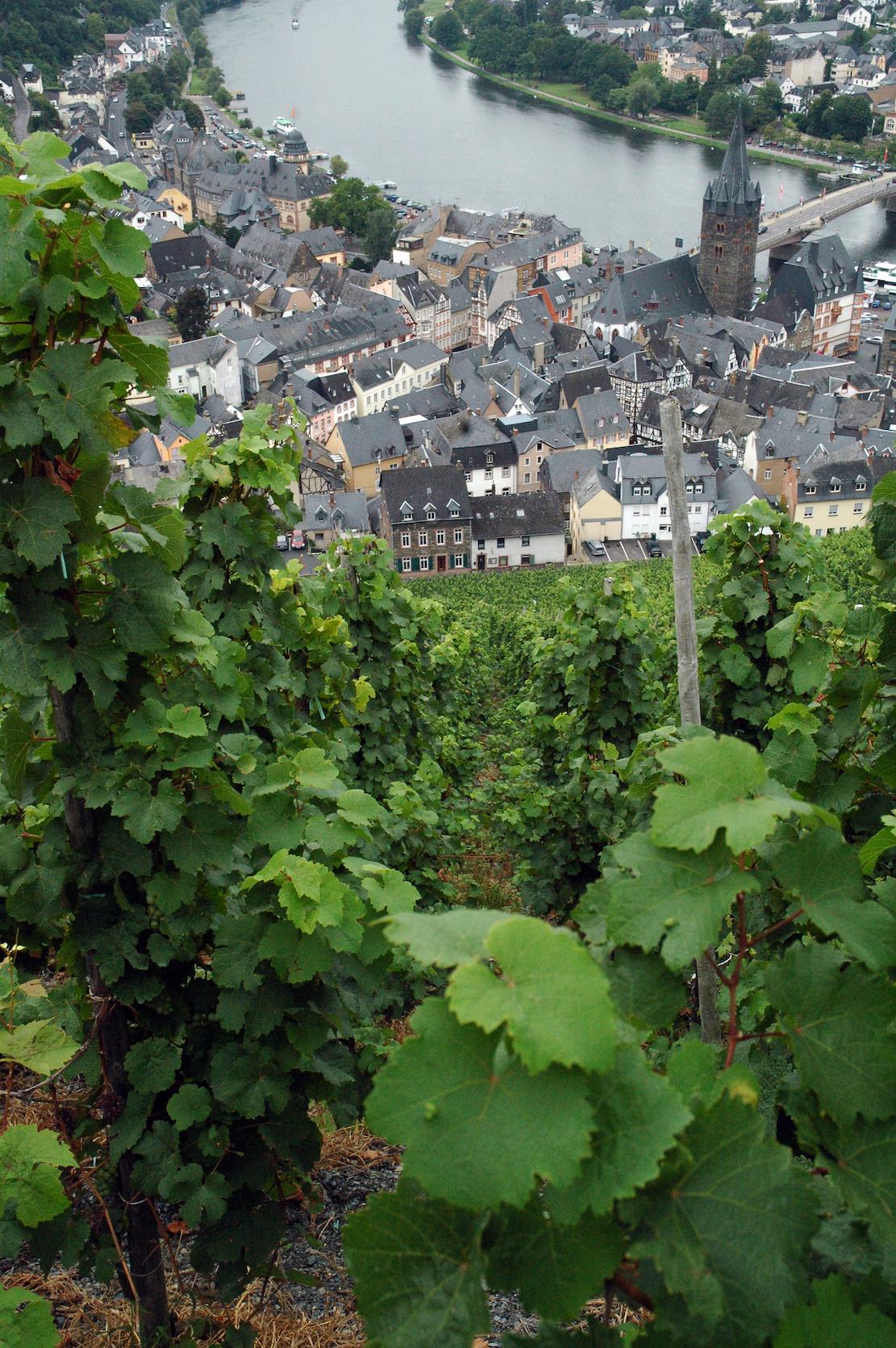 The
best wine in the world is whatever fits your mood
that moment. People love to sneer at over-oaked
California Chardonnays, but many is the meal I’ve
begun with such a glass (especially in the cooler
months). (And shhhh ... don't tell anyone, but
big, flabby whites also go well with salty, robust
cheeses.)
The
best wine in the world is whatever fits your mood
that moment. People love to sneer at over-oaked
California Chardonnays, but many is the meal I’ve
begun with such a glass (especially in the cooler
months). (And shhhh ... don't tell anyone, but
big, flabby whites also go well with salty, robust
cheeses.)
`Nowhere does the law of diminishing returns apply more sharply than when you evaluate the price-to-value paradigm of wine. Absurdly priced trophy wines do not reflect tastes/flavors/sensations that are orders of magnitude greater than similar products. A $500 bottle of wine is not five times better than a $100 bottle. The cost reflects hype and scarcity, not quality. Screaming Eagle, DRC Burgundy, and Château Haut-Brion can be transporting in intensity and complexity, but even experts, in blind tastings, have trouble distinguishing them from bottles costing a fraction of their hefty tariffs—a failing they rarely admit.
At best, wine is a discovery, a journey, a marathon if you will, that l
 asts
a lifetime. You never "master" wine (even Masters
of Wine admit this), all you do is form an
appreciation for it—an ever-evolving admiration
that changes every year, every vintage.
asts
a lifetime. You never "master" wine (even Masters
of Wine admit this), all you do is form an
appreciation for it—an ever-evolving admiration
that changes every year, every vintage.
The best you can do when learning about wine is to broaden, then narrow, your focus. Broaden your horizons by trying new things, then narrow your gaze to wines that appeal to you and then learn more about them. The best wines then become the ones you love and that continue to intrigue you. Think of it like a composer (or band or artist) whose work you love: the more you experience them, the deeper your knowledge and esteem.
But you don't have to do any of this to enjoy "the best wine in the world." Because the best wine in the world (like "the best song in the world") is the one you are really, really enjoying at that moment.
`
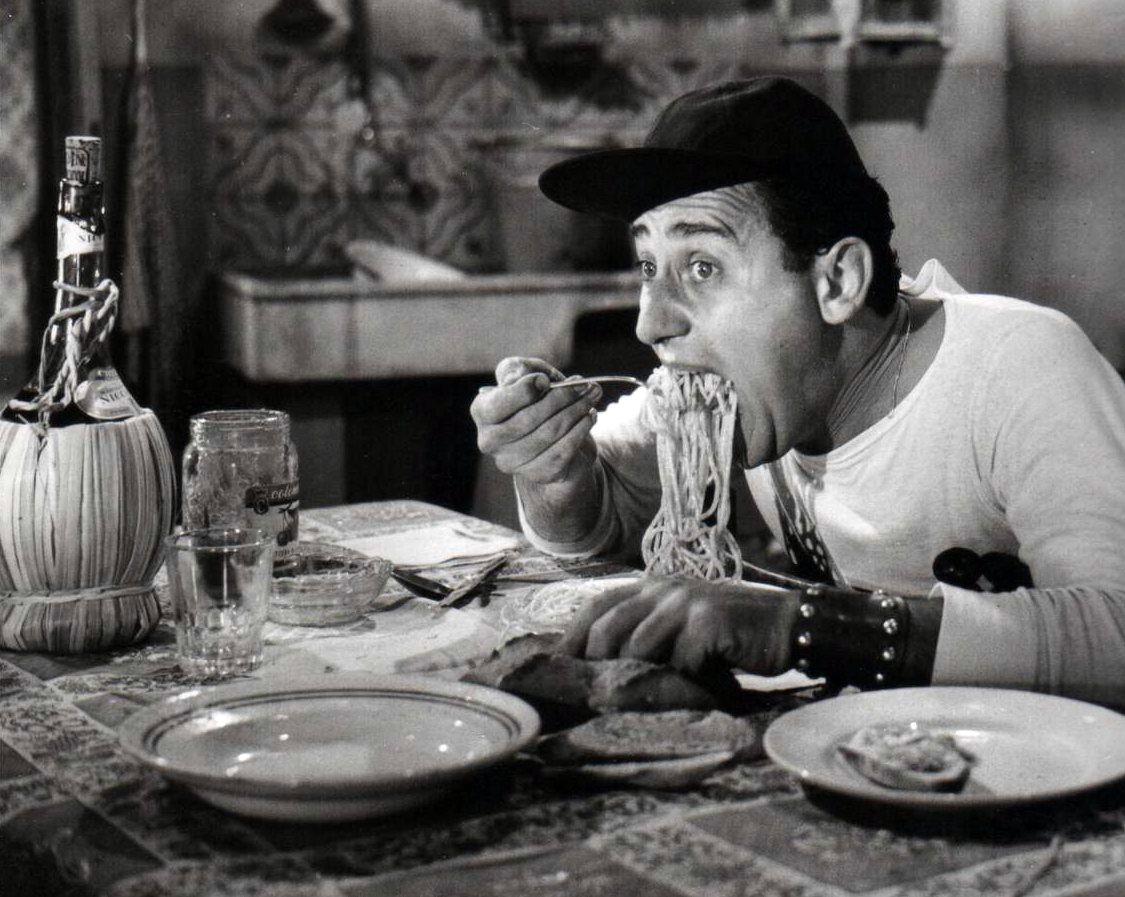 ARTICLES WE NEVER
ARTICLES WE NEVER FINISHED READING
"Why Is Everyone Obsessing Over Bucatini? By Katherine Martinelli, Easter.com (1/7/21)
❖❖❖
Sponsored by

Any of John Mariani's books below may be ordered from amazon.com.
 The Hound in Heaven
(21st Century Lion Books) is a novella, and
for anyone who loves dogs, Christmas, romance,
inspiration, even the supernatural, I hope you'll find
this to be a treasured favorite. The story
concerns how, after a New England teacher, his wife and
their two daughters adopt a stray puppy found in their
barn in northern Maine, their lives seem full of promise.
But when tragedy strikes, their wonderful dog Lazarus and
the spirit of Christmas are the only things that may bring
his master back from the edge of despair.
The Hound in Heaven
(21st Century Lion Books) is a novella, and
for anyone who loves dogs, Christmas, romance,
inspiration, even the supernatural, I hope you'll find
this to be a treasured favorite. The story
concerns how, after a New England teacher, his wife and
their two daughters adopt a stray puppy found in their
barn in northern Maine, their lives seem full of promise.
But when tragedy strikes, their wonderful dog Lazarus and
the spirit of Christmas are the only things that may bring
his master back from the edge of despair. WATCH THE VIDEO!
“What a huge surprise turn this story took! I was completely stunned! I truly enjoyed this book and its message.” – Actress Ali MacGraw
“He had me at Page One. The amount of heart, human insight, soul searching, and deft literary strength that John Mariani pours into this airtight novella is vertigo-inducing. Perhaps ‘wow’ would be the best comment.” – James Dalessandro, author of Bohemian Heart and 1906.
“John Mariani’s Hound in Heaven starts with a well-painted portrayal of an American family, along with the requisite dog. A surprise event flips the action of the novel and captures us for a voyage leading to a hopeful and heart-warming message. A page turning, one sitting read, it’s the perfect antidote for the winter and promotion of holiday celebration.” – Ann Pearlman, author of The Christmas Cookie Club and A Gift for my Sister.
“John Mariani’s concise, achingly beautiful novella pulls a literary rabbit out of a hat – a mash-up of the cosmic and the intimate, the tragic and the heart-warming – a Christmas tale for all ages, and all faiths. Read it to your children, read it to yourself… but read it. Early and often. Highly recommended.” – Jay Bonansinga, New York Times bestselling author of Pinkerton’s War, The Sinking of The Eastland, and The Walking Dead: The Road To Woodbury.
“Amazing things happen when you open your heart to an animal. The Hound in Heaven delivers a powerful story of healing that is forged in the spiritual relationship between a man and his best friend. The book brings a message of hope that can enrich our images of family, love, and loss.” – Dr. Barbara Royal, author of The Royal Treatment.
 |
The Encyclopedia of American Food and Drink by John F. Mariani (Bloomsbury USA, $35) Modesty forbids me to praise my own new book, but let me proudly say that it is an extensive revision of the 4th edition that appeared more than a decade ago, before locavores, molecular cuisine, modernist cuisine, the Food Network and so much more, now included. Word origins have been completely updated, as have per capita consumption and production stats. Most important, for the first time since publication in the 1980s, the book includes more than 100 biographies of Americans who have changed the way we cook, eat and drink -- from Fannie Farmer and Julia Child to Robert Mondavi and Thomas Keller. "This book is amazing! It has entries for everything from `abalone' to `zwieback,' plus more than 500 recipes for classic American dishes and drinks."--Devra First, The Boston Globe. "Much needed in any kitchen library."--Bon Appetit. |
"Eating Italian will never be the same after reading John Mariani's entertaining and savory gastronomical history of the cuisine of Italy and how it won over appetites worldwide. . . . This book is such a tasteful narrative that it will literally make you hungry for Italian food and arouse your appetite for gastronomical history."--Don Oldenburg, USA Today. "Italian
restaurants--some good, some glitzy--far
outnumber their French rivals. Many of
these establishments are zestfully described
in How Italian Food Conquered the World, an
entertaining and fact-filled chronicle by
food-and-wine correspondent John F.
Mariani."--Aram Bakshian Jr., Wall Street
Journal.
"Equal parts
history, sociology, gastronomy, and just
plain fun, How Italian Food Conquered the
World tells the captivating and delicious
story of the (let's face it) everybody's
favorite cuisine with clarity, verve and
more than one surprise."--Colman Andrews,
editorial director of The Daily
Meal.com. "A fantastic and fascinating
read, covering everything from the influence
of Venice's spice trade to the impact of
Italian immigrants in America and the
evolution of alta cucina. This book will
serve as a terrific resource to anyone
interested in the real story of Italian
food."--Mary Ann Esposito, host of PBS-TV's
Ciao
Italia. "John Mariani has written the
definitive history of how Italians won their
way into our hearts, minds, and
stomachs. It's a story of pleasure over
pomp and taste over technique."--Danny Meyer,
owner of NYC restaurants Union Square
Cafe, The Modern, and Maialino.
|
 |
 |
 |
 |
 |
 |
 |
 Everett Potter's Travel Report:
Everett Potter's Travel Report: 
 Eating Las Vegas
JOHN CURTAS has been covering the Las Vegas
food and restaurant scene since 1995. He is
the co-author of EATING LAS VEGAS – The 50
Essential Restaurants (as well as
the author of the Eating Las Vegas web site: www.eatinglasvegas.
He can also be seen every Friday morning as
the “resident foodie” for Wake Up With the
Wagners on KSNV TV (NBC) Channel 3 in
Las Vegas.
Eating Las Vegas
JOHN CURTAS has been covering the Las Vegas
food and restaurant scene since 1995. He is
the co-author of EATING LAS VEGAS – The 50
Essential Restaurants (as well as
the author of the Eating Las Vegas web site: www.eatinglasvegas.
He can also be seen every Friday morning as
the “resident foodie” for Wake Up With the
Wagners on KSNV TV (NBC) Channel 3 in
Las Vegas.
MARIANI'S VIRTUAL GOURMET
NEWSLETTER is published weekly. Publisher: John Mariani. Editor: Walter Bagley. Contributing Writers: Christopher Mariani,
Robert Mariani, Misha Mariani, John A. Curtas, Gerry Dawes, Geoff Kalish,
and Brian Freedman. Contributing
Photographer: Galina Dargery. Technical
Advisor: Gerry
McLoughlin.
If you wish to subscribe to this
newsletter, please click here: http://www.johnmariani.com/subscribe/index.html
© copyright John Mariani 2021

